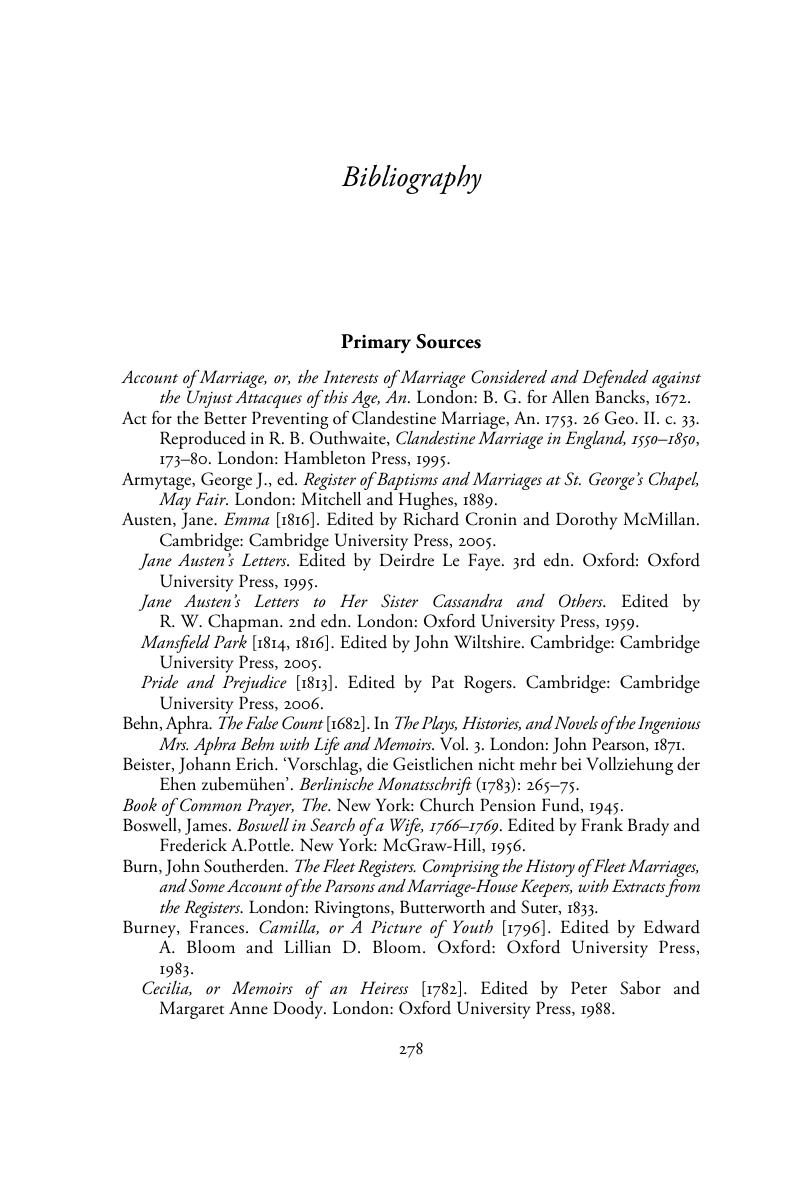 The Origins of the English Marriage Plot
The Origins of the English Marriage Plot Book contents
- The Origins of the English Marriage Plot
- The Origins of the English Marriage Plot
- Copyright page
- Contents
- Illustrations
- Acknowledgements
- Introduction Historicising the English Marriage Plot
- Chapter 1 Church, State and the Public Politics of Marriage
- Chapter 2 Clandestine Marriage, Commerce and the Theatre
- Chapter 3 The New Fiction
- Chapter 4 The Patriot Marriage Plot
- Chapter 5 Literary Marriage Plots
- Afterword
- Notes
- Bibliography
- Index
- References
Bibliography
Published online by Cambridge University Press: 08 July 2019
- The Origins of the English Marriage Plot
- The Origins of the English Marriage Plot
- Copyright page
- Contents
- Illustrations
- Acknowledgements
- Introduction Historicising the English Marriage Plot
- Chapter 1 Church, State and the Public Politics of Marriage
- Chapter 2 Clandestine Marriage, Commerce and the Theatre
- Chapter 3 The New Fiction
- Chapter 4 The Patriot Marriage Plot
- Chapter 5 Literary Marriage Plots
- Afterword
- Notes
- Bibliography
- Index
- References
Summary

- Type
- Chapter
- Information
- The Origins of the English Marriage PlotLiterature, Politics and Religion in the Eighteenth Century, pp. 278 - 298Publisher: Cambridge University PressPrint publication year: 2019
